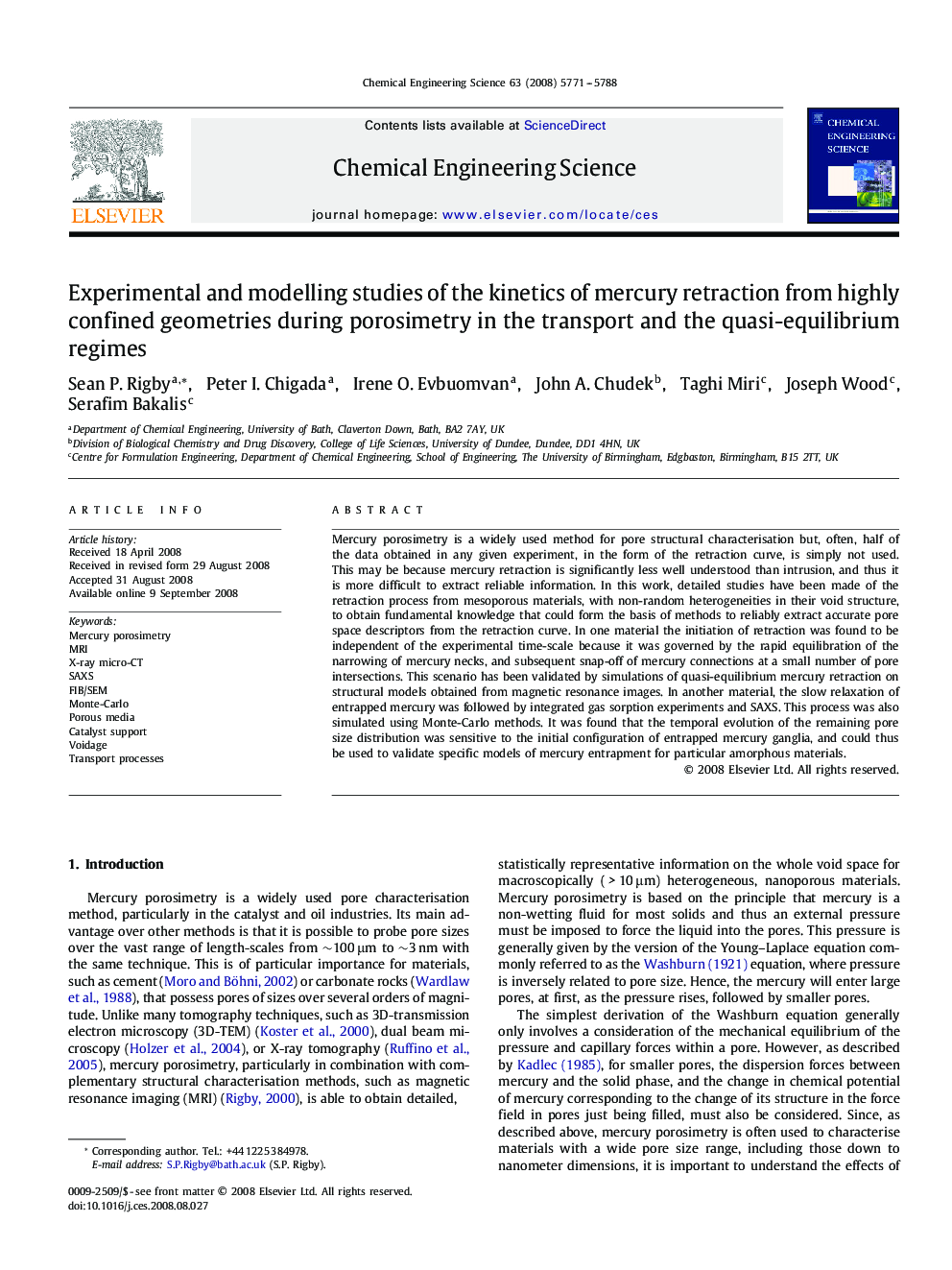| Article ID | Journal | Published Year | Pages | File Type |
|---|---|---|---|---|
| 157835 | Chemical Engineering Science | 2008 | 18 Pages |
Mercury porosimetry is a widely used method for pore structural characterisation but, often, half of the data obtained in any given experiment, in the form of the retraction curve, is simply not used. This may be because mercury retraction is significantly less well understood than intrusion, and thus it is more difficult to extract reliable information. In this work, detailed studies have been made of the retraction process from mesoporous materials, with non-random heterogeneities in their void structure, to obtain fundamental knowledge that could form the basis of methods to reliably extract accurate pore space descriptors from the retraction curve. In one material the initiation of retraction was found to be independent of the experimental time-scale because it was governed by the rapid equilibration of the narrowing of mercury necks, and subsequent snap-off of mercury connections at a small number of pore intersections. This scenario has been validated by simulations of quasi-equilibrium mercury retraction on structural models obtained from magnetic resonance images. In another material, the slow relaxation of entrapped mercury was followed by integrated gas sorption experiments and SAXS. This process was also simulated using Monte-Carlo methods. It was found that the temporal evolution of the remaining pore size distribution was sensitive to the initial configuration of entrapped mercury ganglia, and could thus be used to validate specific models of mercury entrapment for particular amorphous materials.
